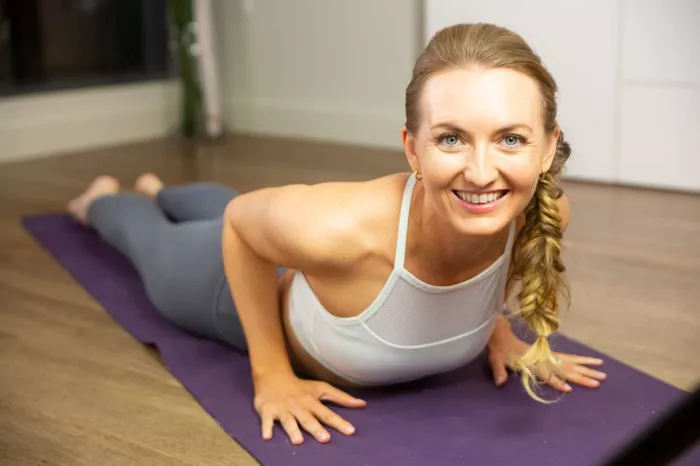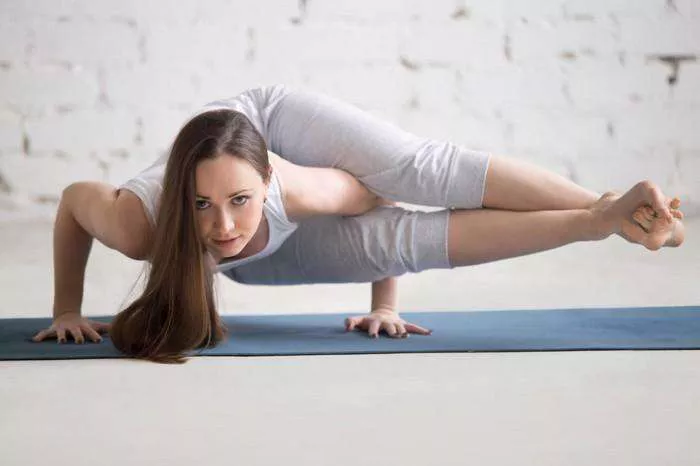Hypermobility, a condition characterized by excessive joint mobility, presents unique challenges and considerations for physical activity. While yoga is often praised for its numerous health benefits, its suitability for individuals with hypermobility remains a subject of debate and inquiry. This article aims to explore the potential benefits and risks of yoga practice for individuals with hypermobility through a series of points.
Understanding Hypermobility:
Hypermobility Syndrome (HMS) or Joint Hypermobility Syndrome (JHS) is a connective tissue disorder characterized by joints that move beyond the normal range of motion. Individuals with hypermobility often experience joint instability, chronic pain, and an increased risk of injury due to the laxity of their connective tissues.
Benefits of Yoga for Hypermobility:
Improved Joint Stability: Yoga promotes strength and stability in the muscles surrounding hypermobile joints, potentially reducing the risk of joint dislocations or subluxations.
Enhanced Body Awareness: Through mindful movement and breath awareness, individuals with hypermobility can learn to better control their range of motion, preventing overextension and injury.
Gentle Stretching: Certain yoga poses can provide gentle stretching benefits without exacerbating joint laxity, helping to alleviate muscle tension and improve flexibility in a safe manner.
Mindfulness Practices:
Breath Awareness: Yoga emphasizes conscious breathing techniques that can help individuals with hypermobility manage pain and stress, fostering a deeper mind-body connection.
Mindful Movement: Practicing yoga mindfully encourages individuals to move with intention and awareness, reducing the likelihood of overstretching or putting excessive strain on hypermobile joints.
Adaptations and Modifications:
Props and Supports: Props such as blocks, straps, and bolsters can be utilized to provide additional support and stability during yoga practice, making poses more accessible and safe for individuals with hypermobility.
Limiting Range of Motion: Practitioners with hypermobility may benefit from modifying certain poses to limit their range of motion, focusing instead on engaging muscles to support the joints without overextending them.
Choosing the Right Style of Yoga:
Hatha Yoga: A gentle and slow-paced style, Hatha yoga focuses on basic postures and breath control, making it suitable for individuals with hypermobility who require a more cautious approach to movement.
Iyengar Yoga: Known for its precise alignment and use of props, Iyengar yoga can be particularly beneficial for individuals with hypermobility, as it emphasizes stability and correct body mechanics.
Restorative Yoga: This deeply relaxing style involves passive stretching and supported poses, offering gentle relief for muscle tension and joint discomfort without placing undue stress on hypermobile joints.
Cautionary Considerations:
Avoiding Overexertion: While yoga can be beneficial for individuals with hypermobility, it’s essential to avoid pushing beyond one’s limits and to listen to the body’s signals to prevent injury.
Consultation with Healthcare Professionals: Individuals with hypermobility should consult with their healthcare provider or a qualified yoga instructor who has experience working with hypermobile clients to ensure a safe and appropriate practice.
Building Strength and Stability:
Focus on Muscle Strength: Incorporating strength-building exercises into a yoga practice can help individuals with hypermobility develop the muscular support necessary to stabilize their joints and prevent injuries.
Balancing Flexibility and Strength: Finding a balance between flexibility and strength is crucial for individuals with hypermobility. Yoga can help cultivate both qualities while promoting overall physical and mental well-being.
Listening to the Body:
Honoring Individual Limitations: Each person’s experience with hypermobility is unique, and what works for one individual may not be suitable for another. It’s essential for individuals with hypermobility to honor their bodies’ limitations and modify their practice accordingly.
Mindful Self-Reflection: Regular self-reflection and introspection can help individuals with hypermobility gain insight into how certain poses and movements affect their bodies, allowing them to make informed choices about their yoga practice.
Conclusion
In conclusion, yoga can offer numerous benefits for individuals with hypermobility when approached mindfully and with caution. By focusing on strength, stability, and mindful movement, individuals with hypermobility can harness the therapeutic potential of yoga to support their physical and emotional well-being. However, it’s crucial for practitioners to listen to their bodies, seek guidance from qualified professionals, and make informed choices about their yoga practice to ensure a safe and beneficial experience.























